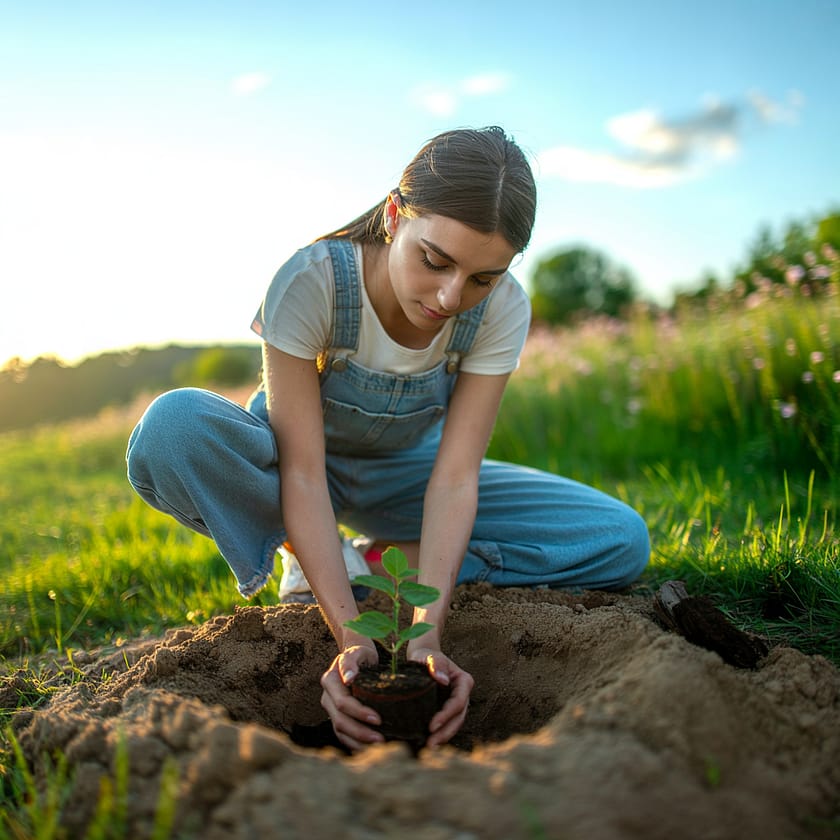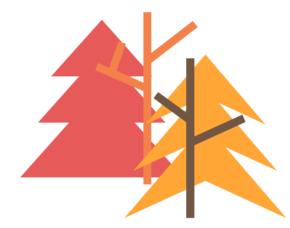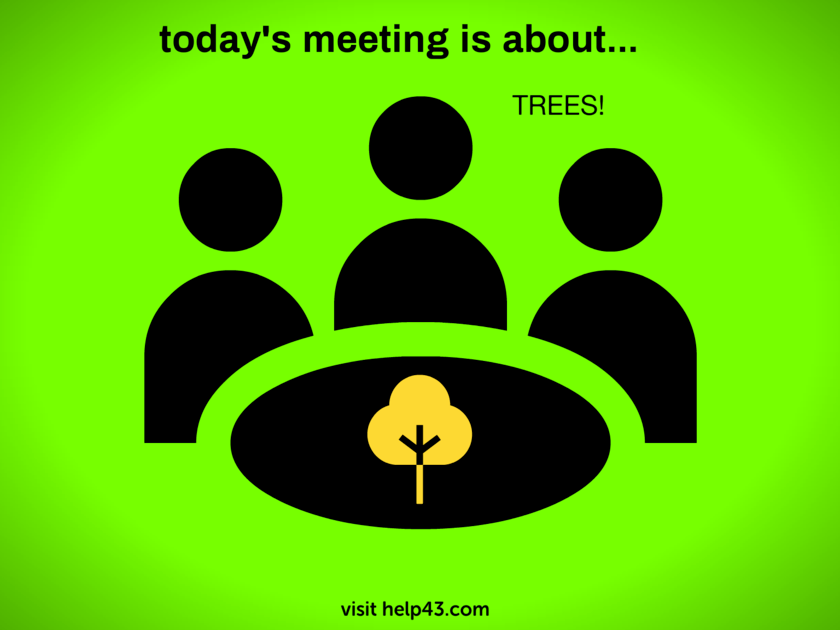Step-by-Step Guide To Planting A Tree
Ever thought about how much of an impact planting a single tree can have? It’s huge. Trees are like the unsung heroes of our planet. They provide tons of benefits, not just for the environment but also for us humans and our communities.
First off, trees are nature’s air purifiers. They suck up carbon dioxide and release oxygen. This whole process helps combat climate change—something we’re all super concerned about these days. Plus, having more trees around can cool the local climate. On a hot summer day, the shade from a tree can literally be a lifesaver.
Then there’s the water management aspect. Trees absorb rainwater and prevent soil erosion. So, not only do they reduce the risk of floods, but they also ensure that groundwater levels are replenished. Pretty neat, right?
When it comes to communities, trees boost our well-being in ways you might not even think about. Just walking in a green space can reduce stress and anxiety. That’s why parks and tree-lined streets are essential parts of cities. They create a peaceful environment that’s good for mental health and social interactions.
Let’s not forget about wildlife. Trees provide shelter and food for countless species of birds, insects, and other forms of wildlife. By planting a tree, you’re contributing to the biodiversity in your area. It’s like creating a mini-ecosystem right in your backyard.
Beyond all these benefits, planting trees also adds value to your property. Right now, well-landscaped yards can significantly up property values. So, you’re getting an aesthetic upgrade and a financial one too.
In essence, planting a tree is like giving a gift to future generations. It’s an action that speaks volumes about your commitment to making the world a better place. So, why not get your hands a little dirty and make a difference?
Choose the Right Tree for Your Locale
Picking the perfect tree might seem daunting, but it doesn’t have to be. The first thing you should know is your climate zone. Every tree has its own preferred conditions where it thrives. Knowing your USDA Hardiness Zone helps narrow down your options to species well-suited for your area’s temperature extremes.
Deciding between native and non-native species is another biggie. Native trees are like your local rock stars—they’re adapted to the local climate, resist pests and diseases better, and require less water once established. Non-native species can add variety and interest to your landscape but might need extra care and attention.
Size and growth rate matter, too. Think about how big the tree will get at maturity. A little sapling might look cute now, but in 10 or 20 years, it could overwhelm your yard or garden. Slow-growing species take their sweet time but often end up sturdier and live longer. Fast-growing trees provide quicker shade but might be more susceptible to damage or disease.
Jumping into research is your next step. Websites, local gardening centers, and even your neighbors can be gold mines of information. Learn about root systems, water needs, and how much sunlight your potential tree prefers. Being armed with knowledge makes the planting process smoother and increases the chances your tree will thrive.
By considering climate, size, and species, you’re making an educated choice that benefits both you and the environment. Happy tree hunting!
Prepare the Planting Site
Picking the right spot for your tree is crucial for its survival and growth. Start by scouting your yard or garden to find a place that offers plenty of space for the tree to spread out as it grows. Remember to consider the tree’s mature size and make sure there are no overhead power lines or underground utilities in the vicinity.
Soil quality is another thing. Trees need nutrient-rich, well-draining soil. You can get a soil test kit from a local garden center to check for pH levels and essential nutrients. It’s a good idea to improve your soil by adding compost or well-rotted manure if needed. This gives your tree a nutrient boost right from the start.
Once you’ve got your location and soil sorted, gather the necessary tools and materials. You’ll need a shovel, garden hose, mulch, and possibly some stakes for support. Having everything ready makes the planting process a breeze and prevents any last-minute scrambles.
Clearing the area of grass, weeds, and debris is the next step. A clean, clear space ensures that your tree won’t have to compete with other plants for nutrients and water. It also makes digging easier and gives your tree a stronger start.
Proper site prep sets the stage for a healthy tree. By taking the time to choose the right location and preparing the soil well, you’re giving your tree the best possible chance to thrive. Ready to get your hands dirty? Let’s make that tree a reality!
Understand Proper Planting Techniques
Start by digging a hole that is twice as wide and just as deep as the tree’s root ball. This gives the roots plenty of room to spread out and establish themselves. Make sure the sides of the hole are not compacted, as loose soil encourages root growth.
When handling the tree, be gentle. If it’s a container-grown tree, tap the sides of the pot to loosen it and carefully slide the root ball out. For balled and burlapped trees, take off any string or wire but leave the burlap in place to prevent the root ball from falling apart during planting.
Position the tree in the hole with the root flare (where the roots start to spread at the base of the trunk) at or slightly above ground level. This helps prevent issues like root rot which can occur if the tree is planted too deep.
Backfill the hole with the soil you removed, firmly but gently packing it down to eliminate air pockets. Air pockets can dry out roots and stunt the tree’s growth. Water the soil generously as you fill to help settle it around the roots.
Adding a layer of mulch around the base helps retain moisture and regulates soil temperature, but avoid piling it against the trunk to prevent rot. Leaving a gap right around the trunk keeps things healthy. By taking these careful steps, you’re setting your tree up for a strong, healthy start.
Water and Mulch Your Tree
Water is essential for your newly planted tree, especially during its first few years. The trick is to strike a balance. Overwatering can be just as detrimental as underwatering. After you plant the tree, give it a deep watering. This helps settle the soil and eliminates air pockets. The soil around the roots should be kept moist but not waterlogged.
A useful tool for checking soil moisture is a simple wooden stick. Insert it into the ground near the tree. If it comes out moist, there’s no need to water. If it’s dry, the tree needs a drink. Be mindful of seasonal changes in water needs; what works in spring might not be enough in the peak of summer.
Mulching is your tree’s best friend when it comes to retaining moisture. Spread a 2-4 inch layer of mulch around the base of the tree, extending out to the edge of the canopy. Avoid creating a mulch volcano—that’s when mulch is piled up against the trunk, which can lead to rot and pest problems. Instead, form a donut shape with a clear gap around the trunk.
Different types of mulch work in different ways. Organic mulches like wood chips or shredded bark decompose over time, adding nutrients to the soil. Inorganic mulches like gravel don’t break down but can be effective in certain landscapes. Choose what suits your situation best.
Watering schedules will differ based on your local climate, tree species, and soil type. There’s no one-size-fits-all answer, so being observant and adaptable is key. Regularly check the moisture level and make adjustments as needed. Healthy watering and mulching habits can make all the difference in helping your tree grow strong and resilient.
Protect Your Tree Against Pests and Diseases
Young trees are particularly vulnerable to pests and diseases, so keeping an eye on them is crucial. Regularly inspect your tree for signs of trouble. Look for discolored or wilting leaves, unusual spots, or any insects hanging around. Early detection can save your tree from serious damage.
Create a regular inspection routine, maybe once a week or every other week. This helps you catch problems before they escalate. Some common pests to watch out for include aphids, caterpillars, and beetles. Using organic insecticidal soap can help manage these pests without harming your tree or the environment.
Diseases often show up as fungi, cankers, or odd growths on the tree. If you spot something unusual, it’s a good idea to consult local extension services or a professional arborist. They can provide accurate diagnoses and effective treatments. Prevention is always easier than cure, so keeping your tree healthy from the start is key.
Here’s a pro tip: proper watering and mulching aren’t just good for growth; they also strengthen your tree against pests and diseases. A healthy tree is less likely to succumb to infestations or infections. Keeping the area around your tree clean and free of debris reduces habitats for pests and helps prevent disease spread.
For added protection, consider using tree guards, especially if you live in an area with a high population of deer or other herbivores. These guards can prevent animals from nibbling on the bark, which can cause significant harm to young trees.
To summarize, vigilance is your best defense. Regular checks, proper maintenance, and swift action in case of problems will keep your tree thriving.
Tree Maintenance and Care
Pruning young trees is vital for ensuring their healthy growth. Focus on removing any dead or damaged branches. This allows the tree to direct its energy toward developing strong, healthy limbs. Pruning also helps shape the tree and encourages a robust structure that can withstand storms and heavy winds.
Don’t forget regular inspections to catch problems early. Look for signs of stress or disease in the leaves and bark. Early intervention can prevent minor issues from becoming major ones. This is especially important during the tree’s first few years, when it’s still establishing itself.
Fertilization can give your tree a boost, especially in nutrient-poor soils. Use a balanced, slow-release fertilizer designed for trees. Overdoing it can harm the tree, so follow the product instructions carefully. Typically, spring is the best time to fertilize, as it supports the tree’s natural growth cycle.
Seasonal care is also important. In the fall, clear fallen leaves and debris from around the tree base to reduce the risk of pests and disease. During winter, protect the tree from extreme weather conditions, which can include mulching and wrapping the trunk to prevent frost damage.
Tree stakes can provide additional support, especially for young trees in windy areas. Make sure the stakes are placed a few inches away from the trunk and loosely tied to prevent rubbing against the bark. Remove the stakes after the first year to allow the tree to develop stronger roots and a sturdy trunk.
Community and Environmental Impact
Planting trees doesn’t just benefit your yard; it has a broader impact on the community and environment. Participating in local tree planting initiatives can be a rewarding way to get involved. These projects often need volunteers, and it’s a great way to meet like-minded people who care about the environment.
Educating others about the benefits of trees can have a ripple effect. Whether it’s through school programs, community workshops, or even just talking to your neighbors, spreading awareness helps build a culture of sustainability. Teaching kids about tree planting can instill lifelong values of environmental stewardship in the next generation.
Trees in urban areas improve air quality, reduce the urban heat island effect, and provide much-needed shade. They make cities more livable and aesthetically pleasing. With more trees, urban biodiversity thrives, benefiting both people and wildlife. It’s not just about beautification; it’s about creating a healthier living environment.
Successful tree planting projects can serve as inspiring case studies. Look for examples of cities or communities that have transformed their green spaces. These stories can provide valuable lessons and motivated action in your own locale. It’s proof that concerted effort and community involvement can lead to significant environmental change.
Of course, you don’t have to participate only in organized events; personal efforts matter, too. Planting a tree on your property or organizing a small neighborhood effort can make a difference. Every tree counts, and the cumulative effect of individual actions can be enormous. Environmentally conscious decisions have a way of inspiring others to follow suit, creating a positive feedback loop.

Conclusion =Your Role in a Greener Future
Choosing to plant a tree is a step toward a healthier planet. You’ve learned how to select the right tree for your locale, prepare the planting site, and care for it throughout its early years. Every action, from watering to protecting against pests, plays a vital role in your tree’s growth and success.
Tree planting is more than an individual effort; it’s a community and global initiative. By taking this step, you contribute to cleaner air, better water management, and increased biodiversity. You become part of a collective movement working toward a sustainable future.
So, roll up your sleeves and plant that tree. Your efforts today lay the groundwork for a greener, healthier tomorrow. Share your knowledge and experience, inspire others, and watch as every single tree becomes a thriving part of our world. A tree planted today benefits generations to come.
Ready to make your mark? You’ll find that the experience of nurturing a tree is one of the most rewarding endeavors. Let’s create a greener future together, one tree at a time.
Botanicus Plus a GPT for starters and experts
Botnicus Plus boasts an array of new features, enhancing its global appeal and user interaction. These include: 1) Multilingual Support for accessibility in various languages. 2) Virtual Tours of famous botanical gardens and historical plant sites. 3) A Botanical Identification Tool for users to upload and identify plants. 4) Seasonal Guides and Tips tailored to local climates and regions. 5) Opportunities for users to engage in Collaborative Projects and Citizen Science Initiatives. 6) Advice on Sustainable Gardening Practices. 7) Interactive Q&A Sessions with botany experts. 8) Personalized Plant Care Reminders for gardeners. These features enrich Botnicus Plus’s mission to provide comprehensive, interactive, and culturally rich botanical education, fostering a deeper connection with the natural world.
Enjoy!👒
Invest in your future
Take time to learn
Embark on your journey in affiliate marketing and website creation alongside an incredible community and myself. Invest in your future by dedicating time to learn and earn. Take all the time you need to master the basics before aiming higher. Give it a try and sign up for free. You won't regret it! Discover the possibilities for yourself...


